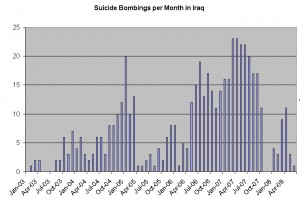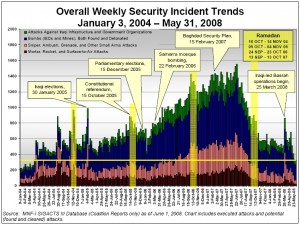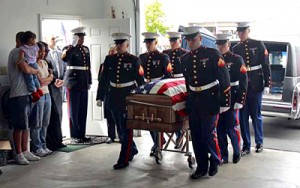Taliban Cross-Border Operations
BY Herschel SmithAs we have discussed before, nationalism is out of accord with both the tenets and goals of radical militant Islamism. Al Qaeda, the Taliban, Hezbollah, and Salafists and Wahhabists worldwide have no recognition of the legitimacy of borders. This characteristic of being a transnational insurgency coupled with Pakistan’s capitulation to them has caused problems for the so-called border region of Pakistan and Afghanistan.
Recently The Captain’s Journal said that the most recent deals with the Taliban made Afghanistan the sacrificial lamb while intending to maintain Pakistan’s stability. Almost as if on cue, a report comes to us on current Taliban freedom to roam to and fro about the border region.
RAWALPINDI, Pakistan – In early June, about 300 fighters from jihadist groups came together for a secret gathering here, in the same city that serves as headquarters to the Pakistani army.
The groups were launched long ago with the army’s clandestine support to fight against India in the disputed Himalayan region of Kashmir. But at the meeting, they agreed to resolve their differences and commit more fighters to another front instead: Afghanistan.
“The message was that the jihad in Kashmir is still continuing but it is not the most important right now. Afghanistan is the fighting ground, against the Americans there,” said Toor Gul, a leader of the militant group Hezb-ul Mujahedeen. The groups included the al-Qaida-linked Jaish-e-Mohammed and Lashkar-e-Tayyaba, banned by Pakistan and branded terrorists by the U.S., he said …
Militants say they operate with minimal interference, and sometimes tacit cooperation, from Pakistani authorities, while diplomats say the country’s new government has until now been ineffectual in dealing with a looming threat.
“Where there were embers seven years ago we are now fighting flames,” a serving Western general told The Associated Press, referring to both Afghanistan and Pakistan’s border regions. He agreed to be interviewed on condition his identity and nationality were not revealed …
Pakistan’s Mohmand and Bajaur tribal areas are emerging as increasingly strong insurgent centers, according to Gul, the militant. His information was corroborated by Pakistani and Western officials. Both those tribal areas are right next door to Afghanistan’s Kunar province.
“Before there were special, hidden places for training. But now they are all over Bajaur and Mohmand,” he said. “Even in houses there is training going on.”
A former minister in President Pervez Musharraf’s ousted government, who did not want to be identified for fear of reprisals, said insurgents were being paid between 6,000 and 8,000 rupees — the equivalent of $90 and $120 — a month in Mohmand and grain was being collected to feed them. He did not identify the source of the donations but said Pakistan’s army and intelligence were aware of them.
Maulvi Abdul Rahman, a Taliban militant and former police officer under the ousted hardline regime, said jihadistsympathizers in the Middle East are sending money to support the insurgents and more Central Asians are coming to fight. Rahman said under a tacit understanding with authorities, militants were free to cross to fight in Afghanistan so long as they do not stage attacks inside Pakistan, which has been assailed by an unprecedented wave of suicide attacks in the past year.
“It is easy for me now. I just go and come. There are army checkposts and now we pass and they don’t say anything. Pakistan now understands that the U.S. is dangerous for them,” he said. “There is not an article in any agreement that says go to Afghanistan, but it is understood if we want to go to Afghanistan, OK, but leave Pakistan alone.'”
Again, just as we had pointed out, the Pakistani deal with the Taliban has as its sole purpose to save Pakistan. It will ultimately lead to the strengthening of the Taliban and the destabilization of Pakistan as well, but given the Pashtun rejection of the war on terror and the malaise of the Pakistani Army, The Captain’s Journal expected the deals to occur.
Note that the Kunar Province mentioned above is the location of 50% casualty rate for U.S. forces in recent combat operations. As the reader might have suspected, The Captain’s Journal says if the Taliban want to fight us in the tribal region, saddle up! Send the Marines after them, border or no border. If Pakistan won’t do the job, then the U.S. can.






